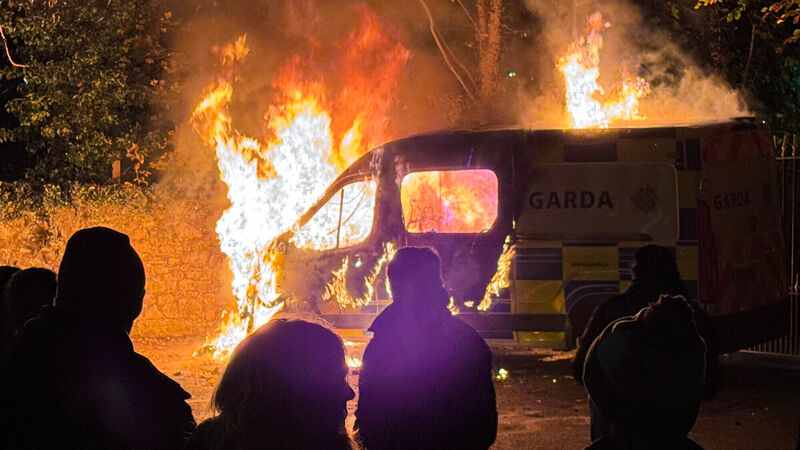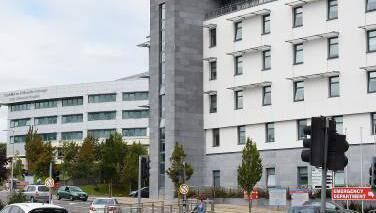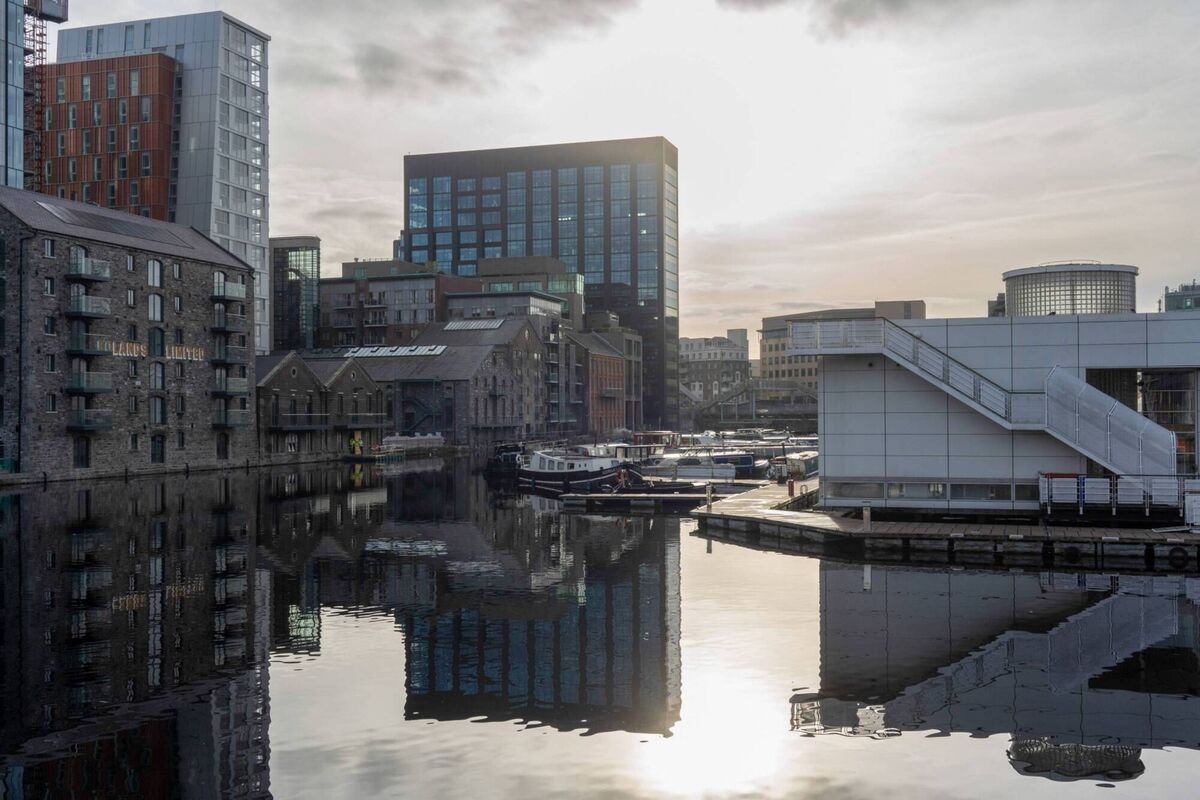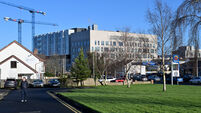Government needs to tackle issues sending desperate people into arms of far right

A Garda van burns outside the Citywest Hotel in west Dublin last week during a protest promoted by anti-immigration and far-right groups. File photo: Sasko Lazarov / © RollingNews.ie
IRELAND needs an increased flow of migrants to sustain the economy in the coming years. However, the State needs to be far more progressive as a welfare state if it is to prevent the continuing rise of anti-immigrant and racist sentiment, where vulnerable and deprived people are having their fears hijacked by the hard-right.
The CSO published population and labour-force projections last year, starting with Census 2022 up to 2057. In order to keep the population from falling, on average 2.2 children need to be born per woman each year. This total fertility rate (TFR) of 2.2 is what’s need to keep the population replacing itself — known as the replacement rate.
From the mid-1960s to the mid-1970s, this rate stood at close to four, meaning that a typical Irish family had four children. It stayed up at 2.5 until the late 1980s, but by 1990, it had fallen to 2.12, meaning that, in the absence of net inward migration (which did happen, and which fuelled the high-growth Irish economy for most of the time since then), the population would have started to fall.

As of Census 2022, the TFR has dropped sharply to 1.55, and is projected by the CSO to drop to as low as 1.3 over the next 33 years. The high fertility rates in the 30 years from 1960 to 1990 meant that Ireland had a large young working population from the late 1970s. But these generations have started to reach retirement age, while we lost a large number of non-returning Irish emigrants in the 1980s.
So, in the coming 30 years or so, the previously large young working age Irish population will get old and very old. There were 780,000 people over 65 in Ireland in 2022.
By 2057, the best-case scenario will see this rise to two million. Even with steady migration, the young population will be at about 860,000 by 2042, whereas now it is over one million.
Putting all this together, the overall effect, even with positive inward migration of 61,000 until 2027, tapering off to 45,000 people per annum until 2057, will mean that, by then, for every three people working in the economy, two will be dependent on them, either because they are under 15 years old or over 65. This is the total dependency ratio. This would see the population rise to 7m by 2057, from 5.2m at present.
Realistically, Ireland needs net migration of over 60,000 per year in the coming decades to reduce this dependency, with the number of births exceeding deaths continuing to shrink, and where deaths will exceed births by 2047.
In turn, this delivers the necessary tax revenue to the government to pay for roads, hospitals, schools, welfare benefits, and the whole ambit of public spending.
These clear truths need to be reflected more in public debates about immigration. Those who fear immigration are not always made aware of these facts, and are often fed false arguments against immigration from sources which seek to divide us.
We all need an economically sustainable State to provide essential services. That means sufficient taxation, with all citizens contributing where possible, as well as enterprise and jobs — which in turn depend on immigration.

However, it is easy for this truism to be sidelined by people in desperate social and economic circumstances. The ESRI only last year found that people who live in disadvantaged communities and who struggle financially are far more opposed to immigrants. This does not take from the fact that more affluent people are better able to disguise anti-immigrant sentiment, a finding from an earlier ESRI report.
The report, entitled , states: “People who feel ‘the economic situation, cost-of-living’ [25.4% of the sample] is the most important issue...have significantly lower comfort with migrant groups; in particular, they feel much lower comfort towards asylum seekers.”
The lack of housing, homelessness, low pay, and other socially marginalising factors have the same effect. These feelings are harnessed by organised racist groupings to stoke racist actions among marginalised and often vulnerable communities.
Eurostat (2024) reported that 48% of Irish households found it difficult to make ends meet last year, the highest of 10 EU countries in Ireland’s peer group. Since then food price inflation has risen by 5.5%. In addition, 16,353 people were registered as homeless last month, even though a significant number of them were working.
According to Social Justice Ireland, in 2025, there were 844,700 people experiencing persistent financial hardship, including 262,700 children.
In addition, high rents, food prices, and energy costs, and people living in desperation — who may have to compete with immigrants for health and social care in the absence of increased supply — can sometimes blame migrants.
Ireland needs migrants. However, the Government needs to tackle rampant poverty, fast-track the living wage legislation, provide far more cost-rental and social housing, tackle waiting lists for health and social care services, amid other measures, if it is to deal with the clearly material factors which are driving anti-immigrant sentiment and sending desperate people into the arms of the racist far-right.
















